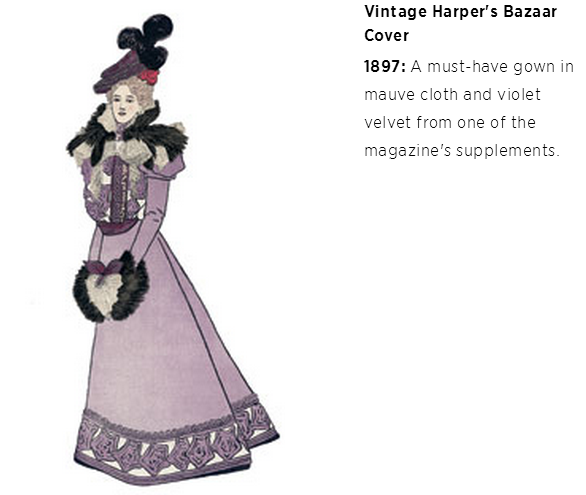 |
| Source: www.harpersbazaar.com |
Technology
in Fashion is usually associated with contemporary issues, developing future
concepts and aesthetic world improvement (Leninhan 2012). The question is what
do we know about the very beginning of tech performance in fashion? Therefore,
technological evolution can be captured in early fashion magazines. Hughes
(2008) reported for The Guardian that through the centuries particularly every
woman who was interested in journal reading was also delighted about the
quality (printing technology, development) and content of fashion magazines
responding to their needs: needlework patterns, detailed problem pages,
fashionable items and valuable emotions too. In February 1693, the first
women’s journal in British history called Ladie’s Mercury made a huge influence
for upcoming publications worldwide. It was taken as an example with more
supplements: interesting themes and issues about women’s environment,
behaviour, appearance, etc. (http://www.theguardian.com/books/2008/dec/20/women-pressandpublishing).
In
addition, it is necessary to mention that Moeran (2012) observed that fashion
magazines are both cultural and technological products. The production includes
readers, advertisers and the fashion world itself. These enable magazines to
link cultural production to the reception of fashion. Firstly, helping to form
a collective concept of what fashion is, and secondly, transforming fashion as
an abstract idea and aesthetic discourse into everyday and cultural production
in terms of the different values (technical, appreciative and social). For
instance, Ladie’s Mercury created a ground idea for further magazines but many
other factors also developed more improved publications: political, art, technological
streamlines. One of the most famous fashion magazines in the world called
Harper’s Bazaar has been evolving since 1867. Here are some samples of Harper’s
covers evolution, where printing technologies and garment trends transformations
are clearly visible.
 |
| Source: www.harpersbazaar.com |
According
to Breward (1994), the noted changes in technology and society had a part to
play in preparing the base for a huge expansion in the 1870s and 1880s. Therefore, production throughout the first half of the
nineteenth century was certainly responding to market conditions: an increased
and literate audience that implied a high reversal of products in technology
and communication progression. The nature of fashion journals enhanced
variations so that printed material came to the development of other expanding:
fashion, travelling and other popular entertainment in operating novelties (http://www.jstor.org/discover/10.2307/1316078uid=3738032&uid=2&uid=4&sid=21103802496443).
Moreover, Glasgow,
Beetham and Boardman (2002) observed Victorian women‘s magazines improvement in
respect of wider absorption and technological intervention. After 1850
Victorian fashion magazines have improved, in challenge of women interests in
the early fashion magazines. These were followed by magazines specifically
intended to cover serious fiction, poetry and fashion combination as well. Evidently,
therefore, the scope of fashion magazines gradually enlarged, reaching its
influential prosperity in both technological and informational aspects. In
other words, the last decade of the nineteenth century in fashionable journals
was covering a wide range of different areas related to fashion and modern
well being. (http://www.emeraldinsight.com.ezproxy.rgu.ac.uk/journals.htm?issn=0024-2535&volume=51&issue=2&articleid=1492733&show=html#sthash.xRvQplDW.dpuf)
Sources:
Journal Citation Reports, Journal of Design History, Emerald Journal, The
Guardian, Harper‘s Bazaar.
Visual sources: www.harpersbazaar.com
 |
| Source: www.harpersbazaar.com |









No comments:
Post a Comment